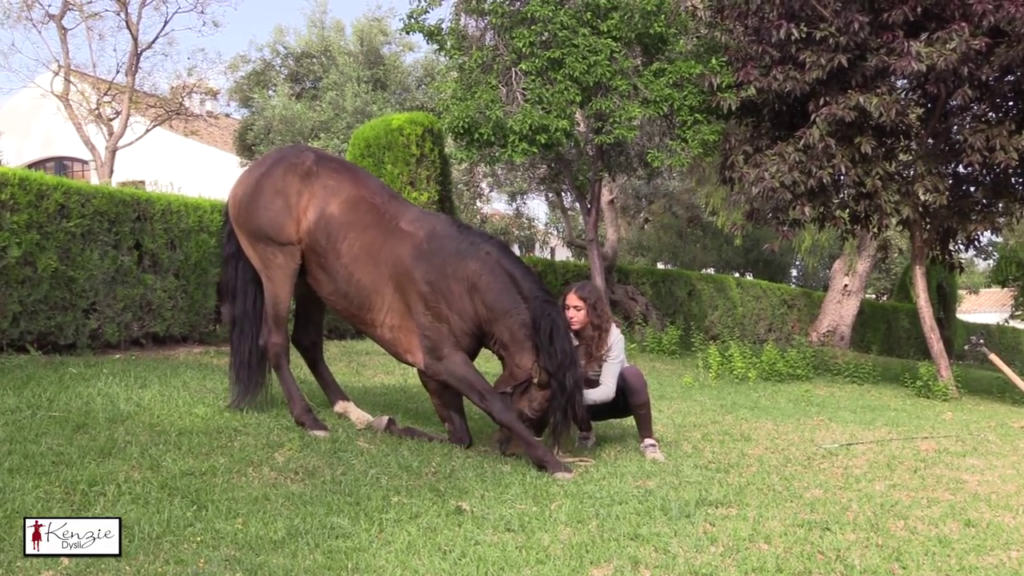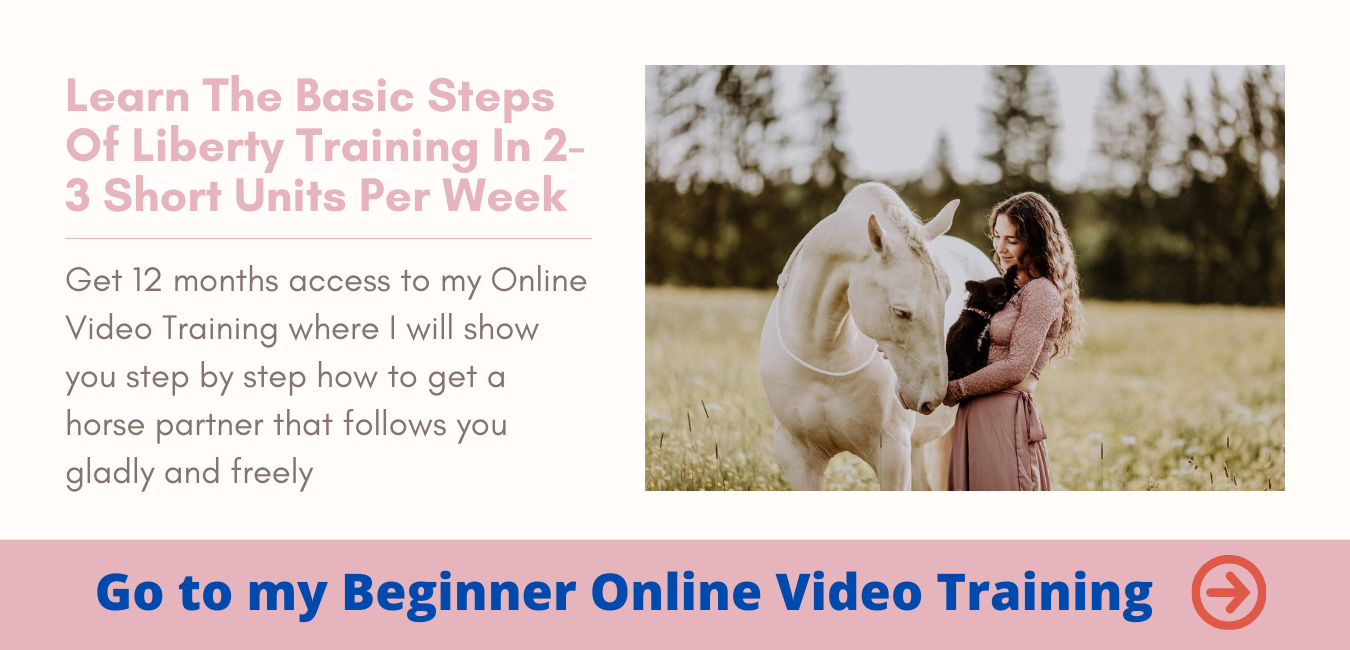Tricks are very much an exercise for fun and games!
But they are so much more!
At least they are no longer to be ignored from my training! Because they are not only a lot of fun and motivate my horses to think actively, they also promote our confidence!
Unfortunately, many horses have already stopped bringing their own ideas into the training during their basic training – for fear of punishment.
But if you now give the horses again the possibility to try out what I as a human being just want from him, many horses really blossom!
[su_youtube url=”https://youtu.be/7S_A_2xz2x4″]
That’s why today I want to show you how to start teaching your horse the compliment.
This exercise in depth requires quite a lot of trust between you and your horse and can make him literally “let himself go”.
The Compliment – Why?
In my courses I like to start with the compliment in the section “Tricks”, because this “exercise in depth” is a good basis to see how trusting your relationship with your horse already is – and it is relatively easy for most horses with a little patience and spit.
Let’s briefly recall what the compliment means to the horse as an escape animal:
By having one foot on the ground, the horse puts himself in a fundamentally risky situation.
Because if you turn out to be a dangerous predator right next to it, it can no longer flee quickly enough. Even if danger threatens from another direction, it takes much longer with the forehand on the ground until the horse can “take off”.
So not only does it have to feel really comfortable with you and be sure that you are not a threat, it also has to trust that you are in control of the situation and paying attention. Only when these factors are in place can your horse really “let himself go”.
If the compliment is executed correctly afterwards – i.e. with a stretched front leg forward and the head in a natural position with a long neck (not lying on the forehead, as you see so often…) the horse also stretches nicely and learns to shift his weight flexibly from the forehand more to the hindquarters.
How do I start?
The first step is to stand next to your horse’s shoulder and lift your horse’s leg as you would when giving hooves.
The only difference is that you don’t look backwards towards the tail as usual, but forwards towards the head.
Then, with the help of a treat, you bring your horse’s head down to the side and “cradle” your horse.
Horses that are good at being pointed backward sometimes don’t need a treat for support but will “just let” you “cradle” them backward.
The most important thing is that your horse’s forehand and hindquarters are far enough apart so that he doesn’t lose his balance on the way into the compliment.
Now many horses jump back up startled when their leg first touches the ground.
This is not a bad thing at all! The important thing is that you yourself remain calm during the whole exercise and thus give your horse the necessary security.
Timing is everything, as always!
Then it really only depends on the right timing!
Try to reward your horse as “down” as possible, i.e. in the compliment or at the beginning shortly before with a treat.
Under no circumstances should you feed your horse when it has jumped up in fright and is standing again – because then it links the jumping up rather than the actual exercise with the reward.
Also, be sure to give your horse a signal to get up from the beginning – at first, of course, while he is getting up on his own.
With time, you can establish this signal so that your horse holds the compliment longer and really only stands up on the signal.
Safety first
It is important that you do not put yourself or the horse in danger in any way.
If, for example, your horse always jumps up uncontrollably during this exercise, climbs or resists: Never force it!
Because you can not and should not force a horse – this is neither good for the horse, nor your relationship. And circus lessons are supposed to do one thing above all: Provide variety and fun! 😉
More motivation on both sides!
But now I would say, you start right away! Once you have started, you can hardly escape the fascination of this completely different “work” with the horse, I think. Tricks are a lot of fun and motivate the horses on a whole new level.
You also learn a lot about your horse’s character! And about how it looks for solutions.
For example, does it tend to rely on the human and wait until the human presents it with the solution?
Or does it actively search for the “right way”? I find this incredibly exciting because it also tells me something about how it approaches new lessons under saddle or in free dressage.
So I and my horses have benefited from tricks not only as such, but definitely beyond!
The compliment in quite detail is of course also a part of it!
But also exercises like the Spanish walk, the put down, head shake, the mountain goat and many more.
Have fun “getting a taste” of the compliment.
All love
Your Kenzie




